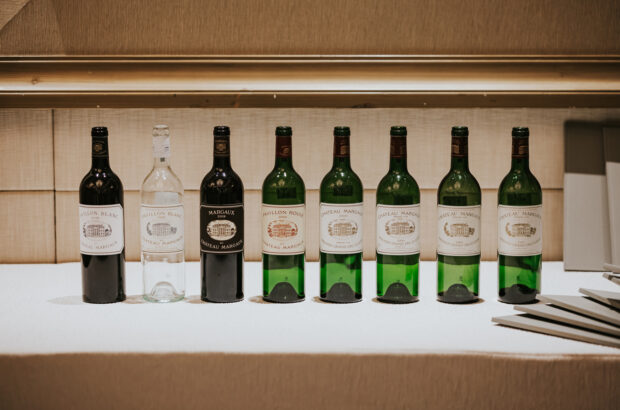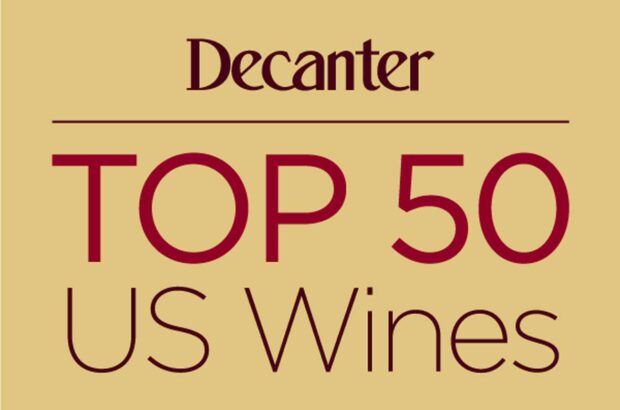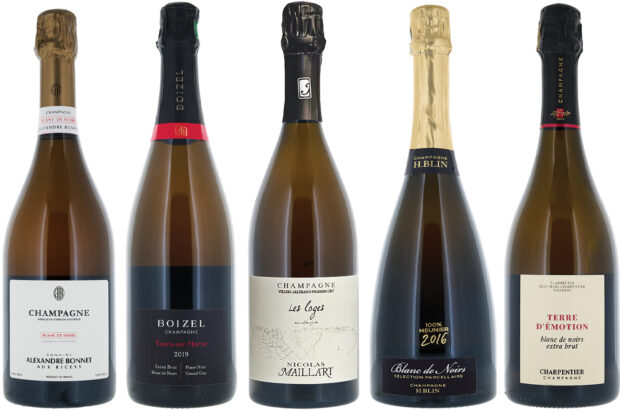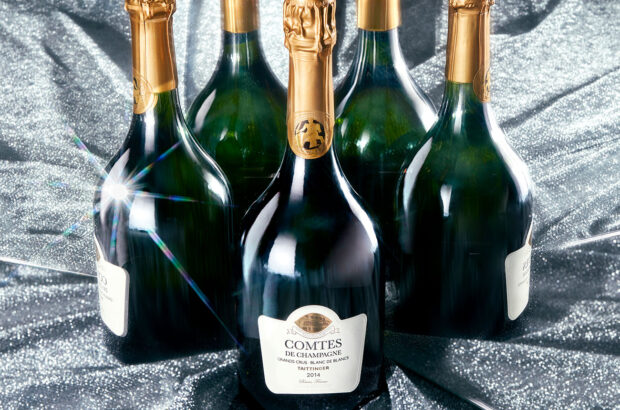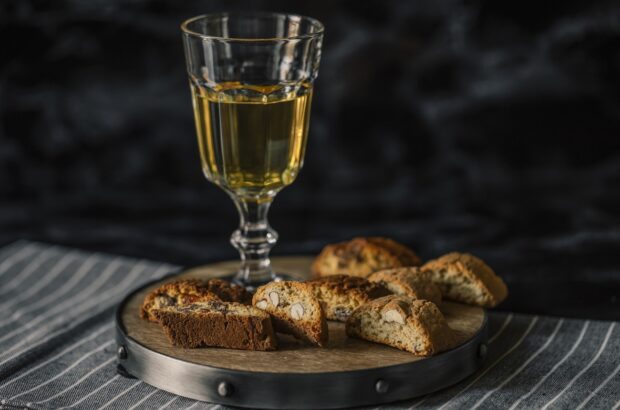It’s been a favourite of wine lovers for years, and now Châteauneuf-du-Pape is producing better wines than ever before. Dynamic young producers and a stack of superb vintages have combined to guarantee many great-value new wines.
Chateauneuf-du-Pape has slipped slowly and softly into a new, more positive era. The Rhône’s largest – with 3,000ha (hectares) of vineyard – and most famous cru hasn’t always lived up to its reputation, but recent years have shown a definite progression. This can be attributed to a string of very good vintages from 1998 with a blip in 2002, and better vineyard management and winemaking techniques. Previously lacklustre domaines add new interest, as do the variations that can now be found in the style of the wine.
Chateauneuf-du-Pape’s best producers:
Key Players
There are 300 domaines in Châteauneuf-du-Pape, of which these are a very personal selection of the best.
Chateau de Beaucastel
The wines of this emblematic estate, admirably run by the owning Perrin family, are inimitable. Dark, rich, firm and structured with a nuance of laurel and thyme, they age for 20–30 years. All 13 varieties are cultivated at the 100ha, organically managed (since 1964) vineyard, with Mourvèdre (30%) and Counoise (15%) given particular prominence at the expense of Grenache (30%). The grapes are destemmed and flash heated before fermentation and the wines aged in oak foudres. In exceptional years the Mourvèdre-based cuvée, Hommage à Jacques Perrin, is produced. The whites, too, are excellent, particularly the sumptuous Roussanne Vieilles Vignes.
Clos des Papes
‘We look for harmony and balance,’ says owner-winemaker Vincent Avril. In this respect his father, Paul, started planting more Syrah and Mourvèdre as far back as 1976 and the proportions are now 10% and 20% respectively with Grenache reduced to 65%. Another important consideration is that the vineyard (with all 13 varieties) comprises 24 parcels dotted throughout the appellation. ‘There can be a 10-day delay in ripeness between the different sites,’ explains Avril. The vineyard management and winemaking is meticulous, the wines aged initially in concrete vats and then for a year in old oak foudres. There’s just one red wine and one white, representing 10% of the production and made from all six white varieties.
Chateau Rayas
Rayas is the exception to the rule that rich, complex, long-ageing wines cannot be made uniquely from Grenache. The secret is very old, ridiculously low-yielding (15hl/ha) vines grown on cooler sand and clay soils rather than the classic stony galets roulés. The ripening cycle is longer and the grapes harvested later. The winemaking is traditional. A fat, floral white Rayas is made from Grenache Blanc and Clairette. Emmanuel Reynaud has achieved greater consistency since taking over from his eccentric uncle, Jacques, in 1997.
Domaine du Vieux Telegraphe
The Brunier brothers, Frédéric and Daniel, have over the years made this estate the benchmark for modern traditional Châteauneuf-du-Pape. Gently aromatic with notes of spice and red fruits, the palate is at once powerful and assertive but with a fine tannic structure, accessible when young but with ageing potential. A conscientious approach in the vineyard, up to 15% each of old-vine (40 years) Syrah and Mourvèdre, old Grenache (60 years), part destemming and ageing in foudres, form the essential part of work practices. Fruit from the young vines goes into the domaine’s second label, Vieux Mas des Papes. The soft, full-bodied but aromatic white is partially vinifed and aged in barrel.
Domaine Bois de Boursan
This estate has leapt to prominence over the last 10 years under the guiding hand of owner-winemaker Jean-Paul Versino. The wines have a perfect note of ripeness, seductive dark cherry aroma, suavity on the palate, power, freshness and length. The winemaking is traditional (no destemming, certain grape varieties vinified together, old vertical press, ageing in foudres) and complements the exceptional quality of fruit. This comes from 27 parcels of old (40–100 years), low-yielding vines distributed around the appellation. Grenache represents 65% of the blend, and Syrah and Mourvèdre 15% each. The more structured, longer-ageing Cuvée des Félix has a greater percentage of Mourvèdre and is aged in old barriques.
Domaine de la Janasse
Grenache is the dominant grape variety at Janasse with up to 80% in the regular wine, 90% in the Vieilles Vignes and 100% (a parcel dating from 1912) in the Cuvée Chaupin. The pitfalls of the variety (rusticity, heavy alcohol, oxidation) are avoided by low yields, and the skilful winemaking of Christophe Sabon provides rich, full, textured wines with a certain aromatic finesse and balance. The winemaking is modern traditional with the grapes partially destemmed, and ageing is in a mix of oak barrels and foudres.
Domaine de Marcoux
Sisters Catherine and Sophie Armenier have run this biodynamically cultivated estate since 1995, taking over from their brother Philippe who initially built the reputation. The Grenache-dominated reds are spicy, rich and intense with a chalky freshness on the finish. The powerfully explosive Vieilles Vignes comes from 70- to 100-year-old vines and is aged in cement vats (the regular wine in a mix of oak barrels). Low yields are again a major factor in quality, the grapes being destemmed according to the vintage. The soft, peachy aromatic white made from Roussanne and Bourboulenc is one of the best in the appellation and ages well.
Chateau La Nerthe
The wines of this impressive (90ha) and ancient (1560) estate are modernist in style but without excess and always with precision. The property has been totally overhauled since its purchase by the Ricard family in 1985 and the arrival of Alain Dugas as manager. All 13 varieties are cultivated, with the Grenache reduced to 55% and Syrah and Mourvèdre weighing in at 18% and 20% respectively. The grapes are completely destemmed and ageing takes place in a mix of vat, foudres and barrel. A touch of new oak is apparent in the young wines. The Cuvée des Cadettes is a special bottling of red while in white there is a regular cuvée and the Clos de Beauvenir.
New faces
Châteauneuf’s reputation rests with its established stars. Few outsiders venture into the appellation, and so transformation has to come from within. These are a handful of the names worth keeping an eye on
Domaine Charvin
Laurent Charvin lives the life of a vigneron passionately. He is the sixth generation at the estate but until he took over in 1990, aged 21, the wines were virtually all sold in bulk. Bottled wines have been a serious proposition since 1995, the style powerful, exuberant, grippy and traditional in concept. Old-vine Grenache forms the heart of the single red wine from parcels dotted around the appellation. ‘Châteauneuf has always been a blended wine, not just of grape varieties but of the different terroirs as well,’ he says. There’s no destemming and the wines are fermented and aged in cement tanks. ‘Grenache is oxidative and unsuited to oak ageing,’ he adds. Tel: +33 4 90 34 41 10
Domaine de Ferrand
The story is similar at Domaine de Ferrand, Philippe Bravay taking over from his father in 1995 and increasing the production of bottled wines. The single red cuvée, produced from 70- to 100-year-old Grenache (95%) is powerful and concentrated with a creamy, summer fruit character. Destemming depends on the vintage. ‘I destemmed in 2003 and 2004 as they were two hot, parched years and I wanted to avoid the possibility of tough, dry tannins,’ he explains. Ageing is partly in tank ‘to keep the red fruit character’ and partly in one-year-old barrels ‘for the added complexity of aroma this can bring’. Tel: +33 4 90 34 26 06
Domaine Raymond Usseglio
The arrival of son Stéphane at the helm in 2000 and investment in the cellars, has brought positive change at Raymond Usseglio. Stéphane’s fine tuning has given greater expression to the fruit and added concentration and finesse. The grapes are partly destemmed, varieties vinified together (a vintage with Jean-Paul Versino of Bois de Boursan inspired this), and the wines aged in both foudres and cement vats. ‘We now vinify according to the terroir,’ he declares. There’s a regular cuvée (75% Grenache, 10% each Syrah and Mourvèdre), old vine Cuvée Impériale (90% Grenache) and improving white. Tel: +33 4 90 83 71 85
Domaine de Cristia
It’s been a slightly rocky ride since Baptiste Grangeon and his sister Dominique took over the family domaine. Their first vintage, the 1999, had to be recalled because of cork contamination. The 2000 was still a period of transition. Then, with the 2001 spot on, the 2002 brought rain and dilution. The 2003 and 2004 wines show positive progression with a defining style. ‘Our vines (80% Grenache) are mainly on clay and sand so we are looking for finesse,’ says Baptiste. The grapes are destemmed and flash heated ‘à la Beaucastel’. Baptiste discarded the old foudres and now uses one-, two- and three-year-old barrels. Depending on the vintage, fruit from old vines is either assembled with the regular wine or separated into the Cuvée Renaissance. Tel: +33 4 90 70 24 09
Domaine Guiraud
François and Marie Guiraud are another brother and sister team who have turned from bulk to bottling at the family domaine. Their arrival in 1998 precipitated further investment in the cellars (Châteauneuf’s former distillery) and new equipment. The Grenache-dominated wines (Syrah represents 20%, and Mourvèdre is being planted) are rich and textured and in a modern traditional style. The grapes are destemmed and given a long period of maceration before ageing in tank for the Grenache and barrels for the Syrah. ‘We may eventually consider demi-muids for the Grenache,’ says Marie. In 2003 the special cuvée Les Gallimardes was assembled with the regular wine giving more structure and length. Hopefully this move will continue in the future. Tel: +33 4 90 83 73 49








